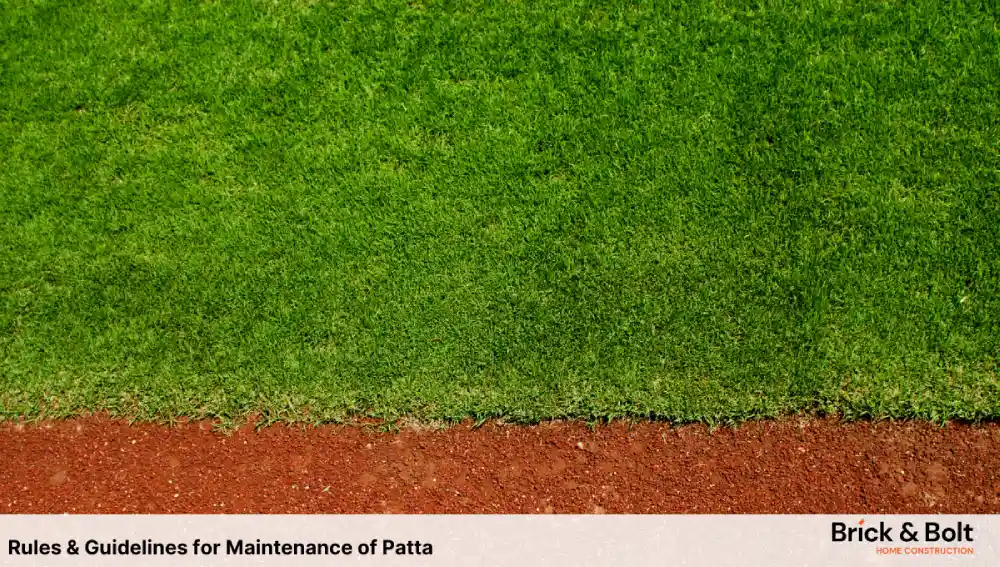A land patta is a legal document that indicates the ownership of a particular property. It is often called the “Record of Rights” which transparently showcases the person who has a legal right to hold the property. The document contains crucial information like survey number, tax details, owner’s name, location and subdivision.
It plays an immense role in property transactions for various legal and administrative purposes. The patta of a land is sufficient to prove that the land belongs to a named person. However, the issuance of a patta is not a simple process; it includes a complex range of rules and guidelines such as that are explained below.
Rules & Guidelines for Issuance of Patta
Having a patta is evidence that you are the rightful owner of a property. It can be obtained only with the following regulations.
Eligibility
To acquire a patta for land, an individual must:
- Confirm that the land is not registered in someone’s name
- Own the land to which the patta is required
Required Documentation
Address Proof (anyone): To verify your current address, submit the address proof like a Passport copy, Aadhaar card, Voter ID or any other government-issued identification.
Ownership Proof: They require documents like a partition deed or sale deed to ensure that you are a legal owner of a property.
Identity Proof: As per the government guidelines, valid identity proof such as a passport, Aadhar card, or voter ID.
Tax Receipts: Need to provide the latest property tax receipts
Encumbrance Certificate: It resembles the absence of monetary liabilities on the property.
Application Process
Visit Website: Visit the Tamil Nadu government’s official website (https://eservices.tn.gov.in/eservicesnew/index.html)
Login: If you are an existing user, you are directed to a required page directly by entering your credentials. Otherwise, click the “Register” option and create an account by filling in the essential details.
Patta Service Page: Once logged in, enter the “Patta & FMB/Chitta/TSLR Extract” section.
Fill Out the Application Form: Click the relevant option and enter all the essential details such as survey number, district, subdivision, taluk, or other information.
Upload Mandatory Documents: Upload the scanned copies of necessary documents like address proof, ownership proof, latest property tax receipt, identity proof and encumbrance certificate.
Submit the Application: Ensure you have entered all the details correctly, and then click the ‘Submit’ button.
Verification And Survey
Once submitted, your application form will be forwarded to the concerned authorities to conduct a thorough inspection./
Issuance
Upon successfully verifying the application form, the patta for land will be issued. You can download it directly from the e-service portal using your application number.
Rules & Guidelines for Maintenance of Patta

Proper maintenance of the patta elevates the accuracy and legal standing of a property. With the following simple steps, you can keep your record up-to-date:
Updating Information
Landowners are required to update the patta periodically. Ensure that the patta records include the changes that happen in the sale, ownership, transfer of land, or inheritance.
Transfer of Patta
Patta transfer is a legal process to include the new owner’s details officially. Hence, the accuracy and legal standing of the patta are efficiently maintained.
Use of Patta
Patta is a primary document in Tamil Nadu. Landowners can use it as legal proof for various purposes. Understanding its significance can help you manage things better.
Legal Relevance
A patta is a legal key document that holds immense relevance in multiple legal contexts. It acts as proof of ownership and mentions the person who owns the land officially.
Importance in Loans and Mortgages
To enable smooth transactions, providing legal security is paramount. Patta acts as valid evidence of ownership in loans and mortgages, which is essential for both borrowers and lenders. It assures the lender that the borrower has a right to use this property as collateral.
Handling Disputes
Lenders verify a land patta of a borrower to ensure that the property is clear and free from any encumbrances.
FAQs
Below are the documents required to apply for a patta.
Address Proof: Passport copy, Aadhaar card, Voter ID, or any other government-issued identification.
Ownership Proof: Partition deed or sale deed.
Identity Proof: Passport, Aadhar card, or voter ID.
Tax Receipts
Encumbrance Certificate
Patta transfer is a legal process to include the new owner’s details officially. Hence, the accuracy and legal standing of the patta are efficiently maintained.

